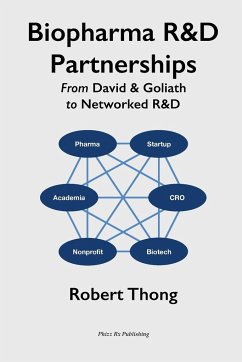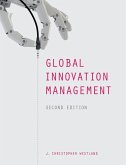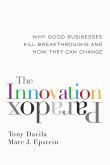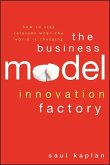This book is about asymmetric "David & Goliath" partnerships in pharmaceutical R&D-bilateral arrangements in which one partner is a smaller bioscience or academic organization (David) and the other a large multinational corporation (Goliath). The past decade has seen a paradigm shift in how medicines and other therapies are discovered, developed and commercialized. The new distributed model of R&D seamlessly blends external partnerships with in-house efforts to generate innovative medicines and create new value. Smaller bioscience firms and academia have been both beneficiaries and targets of this fundamental change. Partnering with giant pharmaceutical corporations can provide the resources and channels to market that an academic laboratory or smaller company simply does not have, but this approach also brings unexpected challenges and new demands. We explore those factors that most influence the emergence of valuable outcomes from such partnerships. In particular, we will adopt in many cases the David perspective, focusing on issues and challenges of most concern to the small partner in such arrangements. If these asymmetric partnerships are to deliver real value for both sides, the Davids in these David & Goliath partnerships must develop the practices and mindset to face these issues and challenges head-on. This book seeks to address this need, drawing upon the partnering experiences and perspectives of more than forty different companies and organizations which the author has either worked closely with or interviewed. After an introductory chapter on how the large pharmaceutical companies have transformed their R&D model, the remaining eleven chapters are organized as three parts. Part A introduces foundation concepts and provides a framework for understanding David & Goliath partnerships. Chapter 2 describes the dynamics of biopharma R&D projects. Chapter 3 discusses execution risk, collaboration risk, collaboration tax, and the financial mechanisms used to share risk and return. Chapter 4 characterizes the different bilateral R&D partnership models. Chapter 5 describes archetypes of collaborating organizations and what drives their behavior in partnerships. Part B dives into the practical aspects of David & Goliath R&D partnerships, looking at what can be done to improve the odds of beneficial outcomes emerging. Chapter 6 considers how organizations select, design and negotiate partnerships. Chapter 7 discusses important considerations in how the project will be organized, conducted, and governed, and by whom. Chapter 8 concentrates on the execution phase, beginning with the honeymoon period, before discussing the inevitable stage transitions and concluding with a look at the periodic maintenance actions needed to keep a partnership healthy. Chapter 9 delves into the key role alliance managers play-the processes they oversee and the problematic situations they are called upon to resolve; we also discuss what makes a good alliance manager. Part C highlights some important trends with respect to collaboration in the biopharma R&D ecosystem. Chapter 10 looks at the efforts of large multinational corporations to upgrade their partnering-related activities by establishing corporate alliance management functions, institutionalizing a common platform of alliance management practices, and scouting for innovations through relationship building and networking. Chapter 11 looks at the increasing role played by academia and nonprofit organizations in biopharma R&D, as llustrated by the growth of strategic industry-academic co-discovery alliances and nonprofit drug discovery organizations. Chapter 12 looks at two alternative paths for building networked R&D organizations that excel at operating partnerships.








